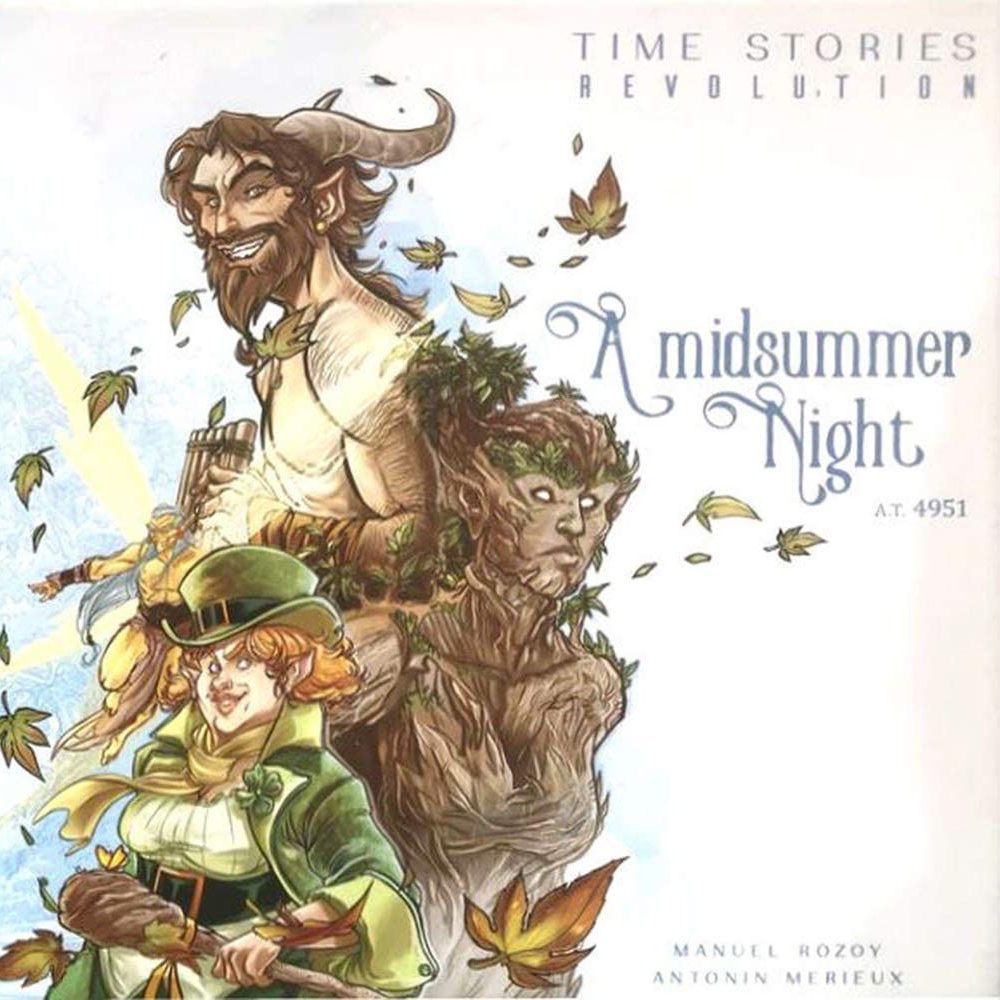
Those of you who follow the site will know that we’re big fans of the time travelling adventures found in TIME Stories. There’s been a fantastic range of scenarios available to plug into the original game board, and we’ve been lucky to see the whole saga through from beginning to end. But that story arc did end, and with it came the birth of the new era of TIME Stories: the Blue Cycle. With a new way to play and a searate set of scearios that don’t necessarily slot together this time, can it keep the magic of the original series of scenarios? Well, we spent some time finding out, and here’s the summary of what we found from A Midsummer Night and The Hadal Project.
I’m going to talk about how the new scenarios work as a whole, so you can stop worrying about spoilers. Instead, this is more about how the new cycle of TIME Stories works and what we can hopefully expect in the future (although there’s no information about additional future stories right now). Hardcore fans of TIME Stories might not like the new way of doing things, but depending on what you’re looking for in a game the new ideas might actually tick a few extra boxes for you.
The key thing is that the original game board is no longer needed. Where as you used to have the really cool components that worked with every scenario, and specific places to plonk everything, that’s no longer needed. Part of that is down to the lack of repeated runs you’ll be doing; one big complaint that some people had (but I quite liked) was that when you go back to the start of the story again you might end up doing the same things again, essentially going through the motions until you get to the part where you need to do something differently. Now, in these new games, there’s none of that. You go back to the scenario and take control of someone as before, but that’s it – from that point on you’re playing the story in one direction and the idea of doing the whole repeated time-hopping thing has been dropped.
That’s not a bad thing necessarily, it just changes how things work. But as such, the idea of playing this with younger people has now been opened up, and I was able to enjoy these with my son because everything was new and different as we went through – the repeating nature of the White Cycle scenarios would probably have made him switch off to the idea, but he was happy to sit through these with a bit of a break at times. If, though, you were a big fan of that mechanic then you need to know that it’s been and gone. The new stories are more linear in that respect.
But, that said, the stories themselves are enjoyable. If you forget for a moment that this has a TIME Stories badge on the front and treat them as interactive stories that you can heavily influence, with a range of interesting puzzles and the same only-one-player-can-see-things that we had before, they’re genuinely enjoyable. Being able to crack them open anywhere and start playing without needing to set up the arger board and components is great for getting up and running straight away, and they’ve done a great job of simplifying the rules to make it more accessible.
As such these new scenarios don’t have the full TIME Stories vibe to them, and while the way you use cards to lay out your location and search areas for things remains much the same, you won’t get the full fun out of this if the setup and old mechanics were what kept you coming back to the gaemes. Personally I think it’s a great new direction; the previous scenarios had run their course and mixing things up a bit will help to keep things moving and feeling fresh. Both of the new scenarios are enjoyable too, with the Hadal Project being an official build of one of the highest rated fan stories, and a Midsummer Night having the expected Shakespearean twist that the name suggests. They’re fun, enjoyable and accessible stories that will help bring new people into the TIME Stories universe without the need to spend half an hour explaining how it works.
So yes, the new blue scenarios are very different in mechanics, and yes that means you don’t get the cool wooden pegs and components used in the first series of stories, but what we’re left with is a fresh approach which allows more people to enjoy the great writing (and occasionally amusing mis-translation) of TIME Stories. Give these a go – I suepect you’ll enjoy it more than you think.
These games were provided by Asmodee for review purposes – this does not have any impact on the honesty of our review.

Leave a Reply